History of the Secretariat of Laity
| Comission of Laity (2002) |
| Appointed at the end of 2002: Brs. Pedro Herreros, C.G., President; Emili Turú, C.G.; Antonio Ramalho, C.G.; Paulo Celso Ferraresi, Secretary (2003 – 2004). |
| Consultative Group (2005) |
 Creation of the Consultative Group on the Laity and meeting in Rome (26-29 May 2005) to obtain the opinion of committed lay people on the direction of the Commission of Laity. Creation of the Consultative Group on the Laity and meeting in Rome (26-29 May 2005) to obtain the opinion of committed lay people on the direction of the Commission of Laity.In this period, the Secretary was Br. Michael Flanigan (2004 – 2005). This group was composed of: Marta Porta (Catalunya – L’Hermitage), Frank Aumeier (Germany – West Central Europe), Claudia Rojas (Colombia –Norandina), Joe Reganato (United States), Achi Godwin (Nigeria), Edison Oliveira (Brasil – Rio Grande do Sul), Encarna García (Spain – Mediterránea), Anne Dooley (Australia – Melbourne), Andrés Magallanes (Philippines) and Adrienne Egbers (Zambia – Southern Africa). |
| Bureau of laity (2006) |
 The General Council, in the plenary sessions January-February 2006, decided to reorganize the structure of animation of the General Administration, suppressing the Commission of Laity and creating the Bureau of Laity, integrated into the Mission Commission. Br. Pau Fornells was appointed director for a four year term 2006 –2010. The General Council, in the plenary sessions January-February 2006, decided to reorganize the structure of animation of the General Administration, suppressing the Commission of Laity and creating the Bureau of Laity, integrated into the Mission Commission. Br. Pau Fornells was appointed director for a four year term 2006 –2010. |
| Enlarged Bureau (2007) |
 In September 2007, the General Council approved the creation of a new structure for the Marist laity: the Enlarged Bureau of Laity, with the appointment of the following persons to collaborate with the director of the Bureau: Ana Sarrate (Ibérica – Spain), Linda Corbeil (Canada), Tony Clarke (Sydney – Australia) and Br. Afonso Murad (Brasil Centro Norte). The appointments were for three years. In September 2007, the General Council approved the creation of a new structure for the Marist laity: the Enlarged Bureau of Laity, with the appointment of the following persons to collaborate with the director of the Bureau: Ana Sarrate (Ibérica – Spain), Linda Corbeil (Canada), Tony Clarke (Sydney – Australia) and Br. Afonso Murad (Brasil Centro Norte). The appointments were for three years.
They met once a year to design and develop the Bureau’s Animation Plan. |
| Two co-directors (2010) |
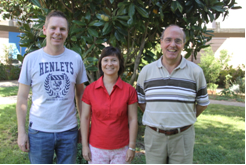 With the appointment of a new Director of the Bureau for the 2010-2013 term, Br. Javier Espinosa, the General Council introduced the figure of the co-directors. Ana Sarrate (Province of Ibérica) and Tony Clarke (Province of Sydney) were appointed to this role in August 2010. With the appointment of a new Director of the Bureau for the 2010-2013 term, Br. Javier Espinosa, the General Council introduced the figure of the co-directors. Ana Sarrate (Province of Ibérica) and Tony Clarke (Province of Sydney) were appointed to this role in August 2010.
These appointments were intended to give laity greater leadership and co-responsibility in the leadership of the Bureau. The co-directors and the director meet three times a year, one of these times coinciding with the meeting of the Enlarged Bureau of Laity. |
| New Enlarged Bureau (2011) |
This new structure is intended to promote a stronger relationship among the regions of the Institute, to draw up the plan and courses of action of the Bureau, taking into account the various cultural sensibilities, and to increase the possibility of lay animation at all levels. |
| Significant events |
| The most important events which have helped the process of giving value to the lay vocation in the life of the Institute: |
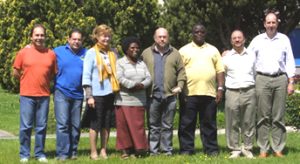

|
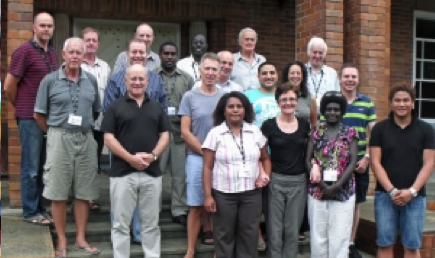 Starting in 2011, the Secretariat of Laity organized regional meetings in different parts of the world for the Provincial Commissions of lay animation and new relationship, in order to encourage their work: Cono Sur in Curitiba; Arco Norte in Guatemala; Europe and Africa in El Escorial (with the participation of Brothers Sylvain Ramandimbiarisoa from Madagascar, and Joe Waltson from Southern Africa); Asia in Bangkok; and Oceania in Auckland. Lay leadership training, language unification, and developing a sense of identity for the Commissions at the interprovincial and international levels were the goals they tried to achieve.
Starting in 2011, the Secretariat of Laity organized regional meetings in different parts of the world for the Provincial Commissions of lay animation and new relationship, in order to encourage their work: Cono Sur in Curitiba; Arco Norte in Guatemala; Europe and Africa in El Escorial (with the participation of Brothers Sylvain Ramandimbiarisoa from Madagascar, and Joe Waltson from Southern Africa); Asia in Bangkok; and Oceania in Auckland. Lay leadership training, language unification, and developing a sense of identity for the Commissions at the interprovincial and international levels were the goals they tried to achieve.
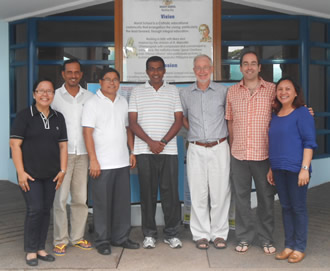 DIn 2012 and 2013, the Secretariat launched the Continental Commissions (America, Europe, Africa, Asia and Oceania), formed by members of the expanded Secretariat and representatives from the Provinces. The proportion of brothers and laity fluctuates in each Commission, and the place of their yearly meeting rotates among the different Provinces.
DIn 2012 and 2013, the Secretariat launched the Continental Commissions (America, Europe, Africa, Asia and Oceania), formed by members of the expanded Secretariat and representatives from the Provinces. The proportion of brothers and laity fluctuates in each Commission, and the place of their yearly meeting rotates among the different Provinces.
During the Expanded Secretariat meeting in Canada in 2012, we launched the update process of the Champagnat Movement, through a commission formed by Ana Sarrate (Coordinator), Paty Ríos (Western Mexico), Agnes Reyes (East Asia), Réal Sauvageau (Canada) and Edison de Oliveira (Rio Grande do Sul). They met again in Guadalajara and Rome, adding three members to the Commission: Michel Beaulac (Canada), Alfredo García (Mediterranea) and Adalberto Amaral (Brasil Centro-Norte). Four new members joined in during the final stage of the process: Claudia Rojas (Norandina), Sylvain Ramandimbiarisoa (Madagascar), Linda Corbeil (Canada) and Layza Gomes (Brasil Centro-Norte).
.
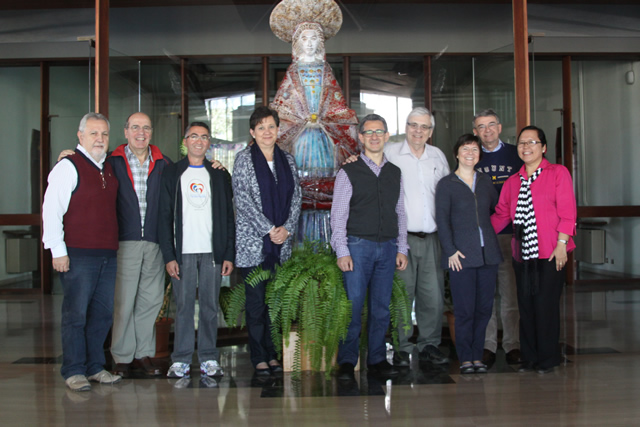
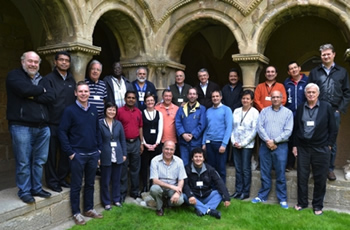 At the end of May 2013, the Extended Secretariat of Laity met for the first time with two representatives from each Continental Commission in Les Avellanes. The discussion revolved around the main topics of the lay process: lay vocation, bonding, community experiences, accompaniment process, and charismatic development.
At the end of May 2013, the Extended Secretariat of Laity met for the first time with two representatives from each Continental Commission in Les Avellanes. The discussion revolved around the main topics of the lay process: lay vocation, bonding, community experiences, accompaniment process, and charismatic development.
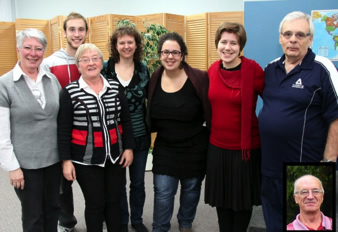 In 2013, the Marist laity in Canada founded the Lay Marist Association, which aims at gathering people who want to live out the Marist spirit, and at fostering the vitality of the Marist work in conjunction with the Marist Institute. The Brothers walked along them during the foundation process offering their full support. A Board of Directors with legal statutes leads the foundation. Similarly, the Province of Australia is carrying out a reflection process regarding the foundation of a Public Association of the Faithful integrating brothers and lay people.
In 2013, the Marist laity in Canada founded the Lay Marist Association, which aims at gathering people who want to live out the Marist spirit, and at fostering the vitality of the Marist work in conjunction with the Marist Institute. The Brothers walked along them during the foundation process offering their full support. A Board of Directors with legal statutes leads the foundation. Similarly, the Province of Australia is carrying out a reflection process regarding the foundation of a Public Association of the Faithful integrating brothers and lay people.
From March 26 to 29, 2014, on the initiative and invitation of Brother Superior General, an international meeting took place in Rome on the topic of lay bonding and belonging. Brother Emili promoted this meeting echoing the General Conference at the Hermitage, and almost all the Provinces of the Institute participated. The meeting’s Recommendations to the General Council inspired a Work Proposal that the Council asked the Secretariat to carry out, with the General Chapter of 2017 as deadline.

In September of 2014, the II Marist International Mission Assembly took place in Nairobi, Kenya, with the participation of more than 110 lay people and brothers, who discussed the great topics of Marist mission, spirituality, and the new relationship between brothers and laity. The Final Message of the Assembly presents a number of dreams, challenges, and opportunities that will generate greater vitality for the Marist charism and mission in the world.
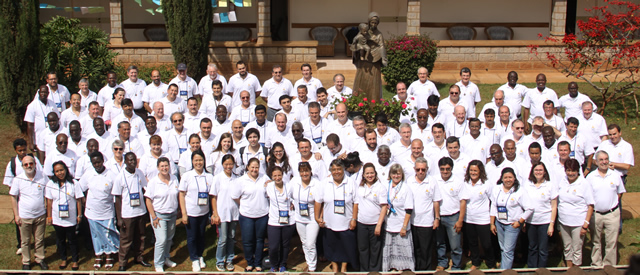
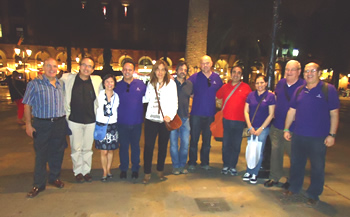 In October 2014, an ad hoc team met in Barcelona to write a first draft of the global framework of a Marist vocational process for the laity. The team members came from the Provinces where there is some kind of lay vocational project or proposal underway: Joe McCarthy (Australia), Raúl Amaya (Santa María de los Andes), Nohemy Pinto (Central America), Eder D’Artagnan (Brasil Centro-Norte), Ana Sarrate (Ibérica and Champagnat Movement), Pep Buetas (Secretariat of Laity) and Brother Javier Espinosa (Secretariat of Laity). The draft aims at eliciting and guiding the contributions from various commissions and reflection groups in the next two years.
In October 2014, an ad hoc team met in Barcelona to write a first draft of the global framework of a Marist vocational process for the laity. The team members came from the Provinces where there is some kind of lay vocational project or proposal underway: Joe McCarthy (Australia), Raúl Amaya (Santa María de los Andes), Nohemy Pinto (Central America), Eder D’Artagnan (Brasil Centro-Norte), Ana Sarrate (Ibérica and Champagnat Movement), Pep Buetas (Secretariat of Laity) and Brother Javier Espinosa (Secretariat of Laity). The draft aims at eliciting and guiding the contributions from various commissions and reflection groups in the next two years.

 First American meeting of the Champagnat Movement of the Marist Family. It took place in Fusagasugá (Colombia) from 2 to 5 November 2005, with 42 participants (26 laity and 16 brothers).
First American meeting of the Champagnat Movement of the Marist Family. It took place in Fusagasugá (Colombia) from 2 to 5 November 2005, with 42 participants (26 laity and 16 brothers).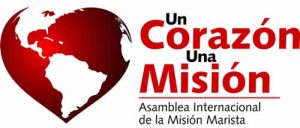 International Marist Mission Assembly (Mendes – Brasil, 3-12 September 2007). The General Council proposed, at the end of 2003, a process of reflection on the Marist mission, in its local, provincial and global phases. For the first time, an international Marist meeting brought together, on conditions of equality, 50 lay people and 44 brothers, elected as representatives of the different administrative units of the Institute.
International Marist Mission Assembly (Mendes – Brasil, 3-12 September 2007). The General Council proposed, at the end of 2003, a process of reflection on the Marist mission, in its local, provincial and global phases. For the first time, an international Marist meeting brought together, on conditions of equality, 50 lay people and 44 brothers, elected as representatives of the different administrative units of the Institute.